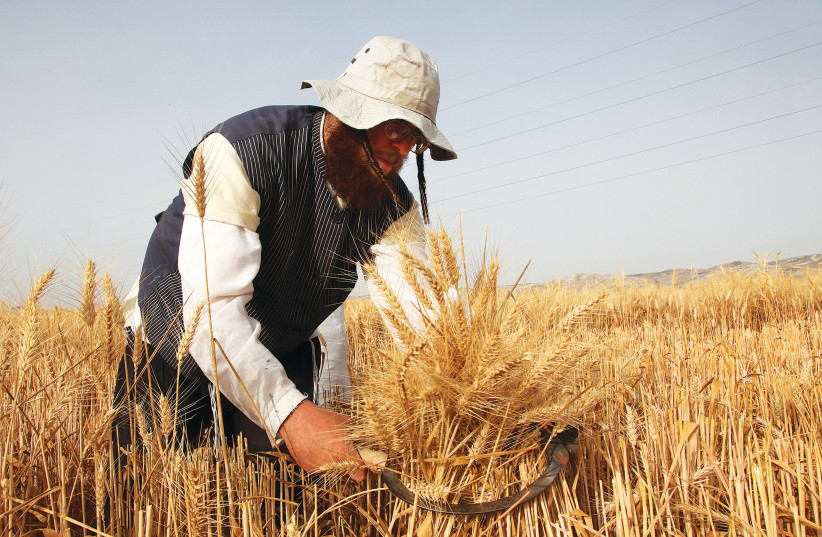Shavuot 2025: Why do we group Jewish holidays together?
By adding Purim to the duo of Passover and Shavuot, this trio reminds us that hiddenness is not static. It is dynamic.

We often group Jewish holidays in pairs – Rosh Hashanah and Yom Kippur, or Passover and Shavuot.
It is interesting that we number the days between these two pairs of holidays to connect them. For example, we call the time between Rosh Hashanah and Yom Kippur, “aseret yemei teshuvah,” the 10 Days of Repentance, with the two holidays bookending an intensive period of introspection.
When it comes to Passover and Shavuot, we count the 49 days that link them, called “sefirat ha’omer,” the “counting of the Omer.” By doing so, we connect the freedom of the Exodus, as celebrated on Passover, to the responsibilities given to us at Mount Sinai, observed on Shavuot.
It would be like counting from July 4 to September 19 in the United States – strengthening the connection between freedom and the US Constitution. Note that this is not done, and most people do not know about or celebrate Constitution Day.
Freedom standing on its own can lead to a self-absorption of demands and even anarchy. It needs the structure of communal responsibility to serve us best. In contradistinction, we say most Jewish prayers in the third person plural, particularly from Rosh Hashanah to Yom Kippur.
Building on these pairings, we can also place Jewish holidays in trios – Rosh Hashanah, Yom Kippur, and Sukkot, as well as Purim, Passover, and Shavuot. As we connect Rosh Hashanah and Yom Kippur in a continuous period of intensified introspection to start a new year, it seems that this should be our approach for the rest of the year.

On Yom Kippur we sit or stand all day; on Sukkot we dance. Individuals who observe Rosh Hashanah and Yom Kippur without Sukkot are getting only half the message of where we should put our energies during the year. A more integrated and balanced approach is called for.
Linking individual freedom to communal responsibility
During the 49-day counting of the Omer period, we link individual freedom celebrated during Passover to the communal responsibility that must go with that freedom – as presented in the Torah given on Shavuot.But there is another theme concurrent with those two holidays, and for that we need Purim and the reading of the Megillah of Esther. One theme of the Book of Esther is hiddenness. The name “Esther” is derived from “nistar,” which means hidden, as Esther hides her Jewish identity through most of the story.
God does not appear at all in the megillah. On Purim, we wear masks, hiding our faces and who we are. In some parts of the world, snow still covers and hides the ground.
The next Jewish holiday is Passover, and at the beginning of the Seder, we hide a piece of matzah, the “afikoman.” In that way, the hiddenness of Purim is connected to the Passover Seder. However, by the end of the Seder, we find and reveal the afikoman, pointing us toward Shavuot and the revelation at Mount Sinai.
In addition, on the second night of Passover, we begin the Omer count from Passover to Shavuot. In this way, Passover acts as the transition from hiddenness to revelation, linking Purim before it and Shavuot after it.
“Hester panim,” the hiding of God’s face/presence, is a spiritual challenge for those on a religious path. We first come across the concept of God hiding when we read about a moment of apostasy by the Jewish people during the exodus from Egypt:“I will become very angry at them on that day, and I will abandon them and hide My face from them. They will be devoured and plagued by many evils that will distress them and will say, ‘Do we not suffer because God has left us?’” (Deuteronomy 31:17)
Rabbi Caryn Broitman teaches, “From this verse derives the Jewish concept of “hester panim,” God’s hiding, which is used to describe the experience of a world where it seems God is absent. When evil and loss are experienced, it is taught [that] it is not that God is absent but that God is “in hiding.”
By adding Purim to the duo of Passover and Shavuot, this trio reminds us that hiddenness is not static. It is dynamic. That which we may feel has been eclipsed and hidden has the possibility to once again shine.
The writer is a Reconstructionist rabbi and rabbi emeritus of the Israel Congregation in Manchester Center, Vermont. He teaches at the Arava Institute for Environmental Studies at Kibbutz Ketura and at Bennington College. ■






